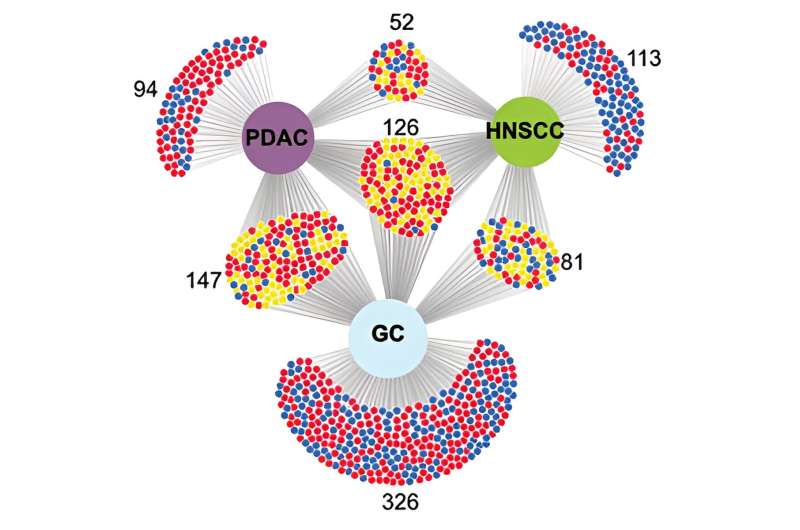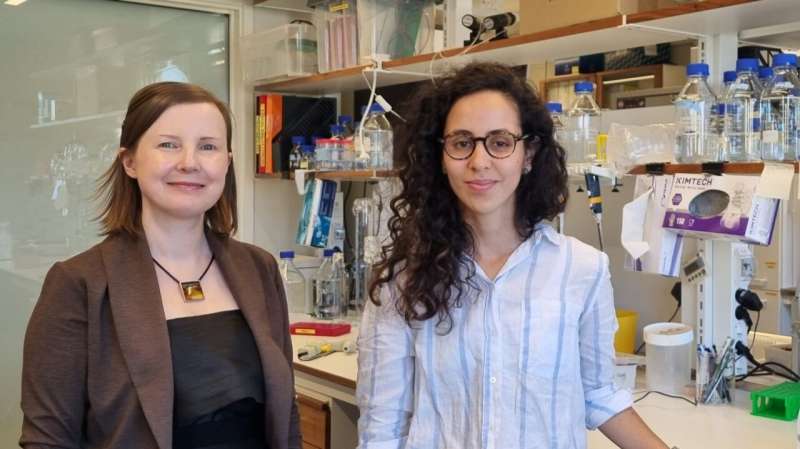This article has been reviewed according to Science X's editorial process and policies. Editors have highlighted the following attributes while ensuring the content's credibility:
fact-checked
trusted source
proofread
Researchers take steps toward stopping the 'conversation' between cancerous tumors and nerves

Cancer tumors hijack the genetic program used by developing nerves. This is shown in a study published in the journal Frontiers in Genetics by researchers at Umeå University. In the long term, the results may open up new ways of treating cancer by limiting the tumor's interaction with the nerves.
"We are still only early in the research, but this opens up exciting opportunities to fight cancer in the body in a completely new way," says Sara Wilson, associate professor of neurobiology at the Department of Integrative Medical Biology at Umeå University.
In cancer, there is an interaction between tumors and nerves. You could say that the tumor talks to the nervous system. The researchers believe that by interpreting this "conversation," it will later be possible to find ways to break it and thus slow down the cancer or reduce the risk of it spreading.
All organs in the body have nerves, which act as a pathway system that delivers information between the organs, the brain and the rest of the body. Many different types of tumors have an increased density of nerves within and around them, compared to healthy organs. It shows that the cancer has caused nerves to grow and reorganize. Normally, the body's nerve map is created very early, when we are embryos in the mother's womb. In healthy people, the ability of the nerves to grow and reorganize is limited, but cancer seems to be able to dislodge this. The question is why.
Previous research has shown that tumors with a high density of nerves grow faster, become larger and spread to other parts of the body and form metastases through the tumor nerves. The cancer uses the nerves like a road to travel out of the tumor. This process is called peri neural invasion, PNI. The goal of the Umeå researchers' study was to decipher the molecular language used in these interactions between tumors and nerves.

The researchers found that in the tumors there was a group of genes centered around the molecular networks normally used by developing nerves. These are the same genes/molecular networks that, in the embryo, help the nerve grow and eventually reach all parts of the body.
Previous studies by the Umeå researchers have shown that as the nervous system forms in the embryo, the "axons," of some nerve cells are used by other nerve cells to move to the right place within the nervous system. The axons create a road map so that other cells find their way.
The Umeå researchers together with researchers throughout the world have also previously shown how the location and direction of the axons from the nerve cells is controlled by networks of certain genes.
The new finding is that the different cancers have their own variants of a set of genes that normally control the nerves' road map, which could be the key to how the nerves are tricked into redrawing their pathways. The cancer seems to reactivate genes that in healthy people are active during the embryo stage where they control the development of the nervous system, but in cancer the genes seem to send signals that favor the growth and spread of the tumor.
"The tumors seem to outsmart the genetic programs of the nerves for their own destructive purposes. Continued research can hopefully provide answers to how we, in turn, can outsmart the tumors to prevent them from using genes to control the nervous system," says Wilson.
The research was conducted through a bioinformatics study of open gene databases from anonymized human patient samples. The study was largely performed by doctoral student Luz María González-Castrillón.
More information: Luz María González-Castrillón et al, Dysregulation of core neurodevelopmental pathways—a common feature of cancers with perineural invasion, Frontiers in Genetics (2023). DOI: 10.3389/fgene.2023.1181775



















